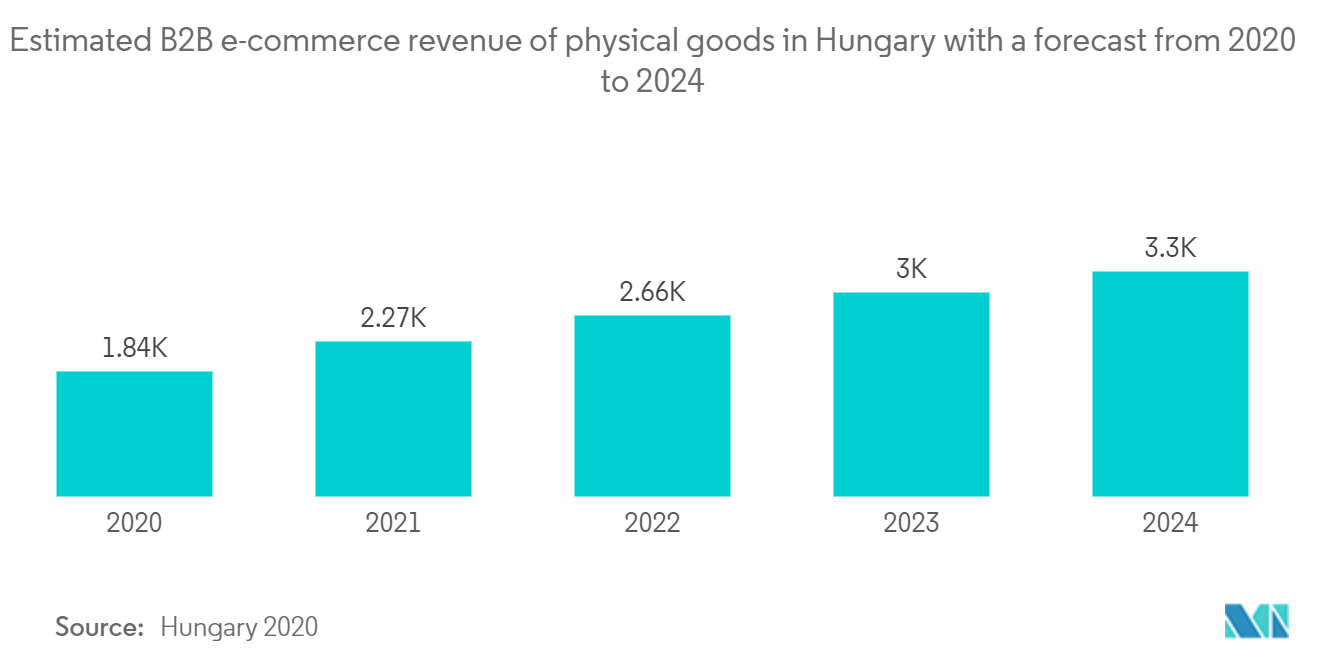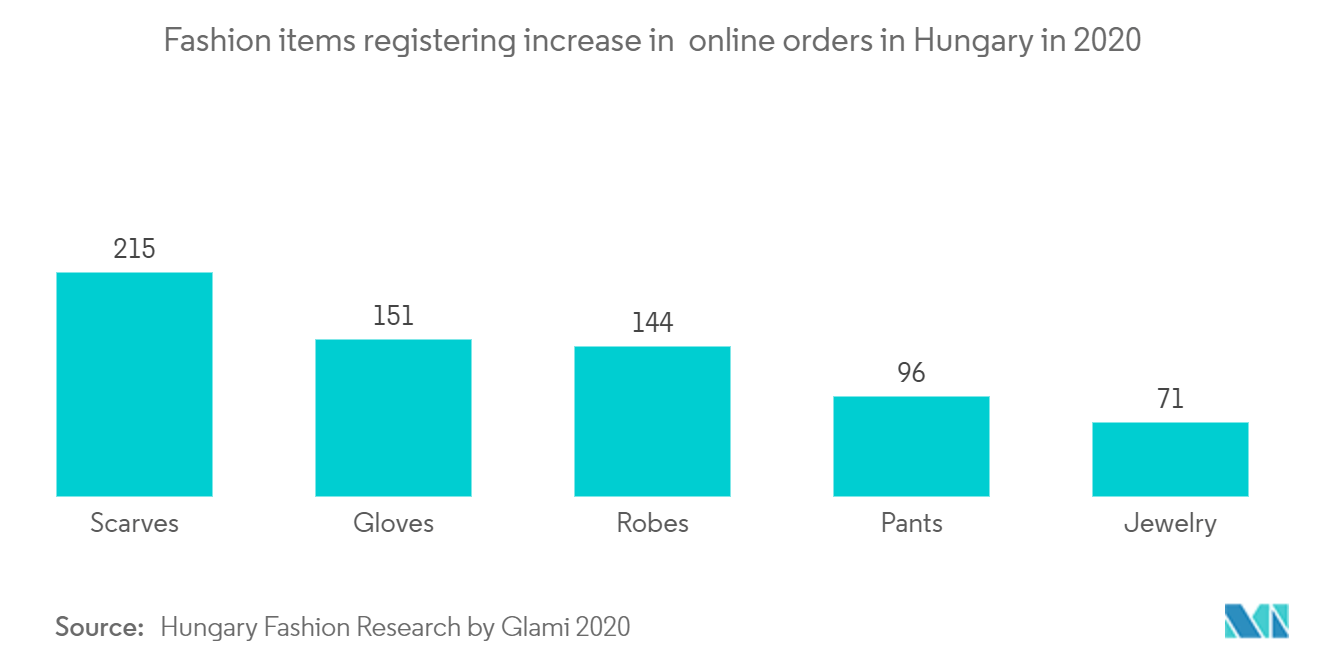Market Trends of Hungary E-Commerce Industry
This section covers the major market trends shaping the Hungary Ecommerce Market according to our research experts:
Increase in E-commerce business during the COVID-19 Pandemic
- Real-time accessibility and 24/7 availability of e-commerce products, and the ease of electronic payments disrupt many aspects of traditional consumer shopping behavior. In the EU, most internet users, especially those under 45, shop online.
- Online content such as clothing, sporting goods, travel, games, videos, music, and physical goods are one of the most popular items. This trend is also driven by the rise of cashless payments, which are becoming more popular in Hungary.
- Various factors contributed to the rise of B2C e-commerce during the COVID-19 pandemic. First of all, the number of active online users, especially young people, is increasing, and more and more people are shopping on the go from various devices. The online payment interface and shopping procedure are more accessible and user-friendly than the retailer-only online shopping apps.
- The coronavirus outbreak also poses various challenges to the e-commerce supply chain in the region. However, the opportunities that e-commerce and cashless transactions offer in terms of convenience, efficiency, and affordability will help further develop in the coming years.
- A recently completed market analysis by the Hungarian Competition Authority ("GVH") on databases has revealed that most Hungarian online shops do not take advantage of the potential of databases. A significant proportion of consumers have expressed concern about the misuse of data provided by online shopping. The role of e-commerce in the lives of Hungarian consumers is increasing, and the COVID-19 pandemic and its limitations greatly accelerate this growth.

Fashion to hold significant market share in the country
- Hungary is one of the biggest e-trade markets that is developing year over year. The pandemic has substantially affected the arena of e-trade and has modified the purchasing behavior of the Hungarian populace. The market with demand is considered the fashion industry, followed by electronics income, grocery, and private care, toys, and interest stores, with fixtures income rounding out the rankings.
- The growth of Hungary's online fashion market is supported by factors such as an increase in internet users, an increase in urban population, an increase in mobile web traffic, a high adoption rate of e-commerce in retail stores, and the use of snowballing by social media users. This also leverages the growth of the e-commerce fashion business in the country.
- However, market growth is challenged by customer retention difficulties, environmental impacts, and human rights abuses. The market is expected to see specific trends such as personalization, multi-channel demand through social media, and the incorporation of artificial intelligence.
- Further, fashion is one of the areas where more localized web stores are advantageous. The online fashion market is dominated by multinational retailers who have web shops in Hungary; for instance, one of the leading online retailers is H&M, a famous fashion chain with many physical stores in the country.


